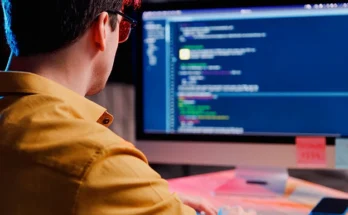Almost half of Spanish families pay for private classes for their children, but while richer households invest in “widening and perfecting” their offspring’s knowledge, poorer ones pay to help “repeat and reinforce” what their children learn at school, according to a thinktank report.
The study, produced by the Esade Centre for Economic Policy and titled Shadow Education in Spain, shows that €1.7bn (£1.5bn) was spent on private lessons between 2019 and 2020, with 47% of households with school-age children shelling out for them.
Languages – especially English – account for 46% of all private classes and remain the number one priority for Spanish families who pay for private lessons. The more money a family has, the more it will spend on private language classes, regardless of the kind of education it chooses for its children.
However, the report highlights clear differences based on income when it comes to how much families spend and what kind of lessons they choose.
Families with children in public schools made up nearly two-thirds of the total spending on private lessons. The rest was spent by families whose children attend private or semi-private (concertado) schools. On average, families with children in public schools spent €235 per child on private lessons. That number went up to €300 for students in semi-private schools and €606 for students in fully private schools.
The report says, “Along with the difference in how much is spent per child, the biggest difference between school types is seen in the kind of subjects families spend money on. These are subjects that help review and strengthen school lessons.”
“For students in private schools, these types of lessons are almost never used. But they make up 30% of the lessons for semi-private school students and 40% for students in public schools.”
The report also explains that families who spend money on extra lessons to “expand and improve” their children’s education are part of a wider trend seen around the world. This is especially clear in Asia, where families focus on giving their children a “competitive edge” for getting into top schools.
The report’s authors say that this trend is supported by the fact that wealthier families spend more on language and arts classes for their children.
The study notes that private lessons have grown “without stopping” since the early 2000s. It says there are different ways to look at the rise of private lessons.
“In general, more money spent on private lessons in subjects like languages and arts shows that many parents want to give their children more chances to learn,” the report says.
“But some people may also see this as a sign that parents are unhappy with the quality—or perhaps the amount—of language and arts education offered in schools.”
The report points out that in some countries, governments have used extra lessons to help students catch up after the learning losses caused by the Covid pandemic. However, it also warns that public school systems might lose support and funding if they can’t compete with private lessons.
To stop private lessons from becoming the standard, the authors say, it’s important to reduce the need for them. This means improving public trust in public schools and teachers. They also suggest creating policies that deal with the reasons families turn to private lessons, such as high failure and repetition rates and very tough exams.
“In addition, changes are needed in how learning is measured, how students are guided through school and careers, and in how subjects are taught—so that school can become a path where everyone has a fair chance to succeed in their own way.”




